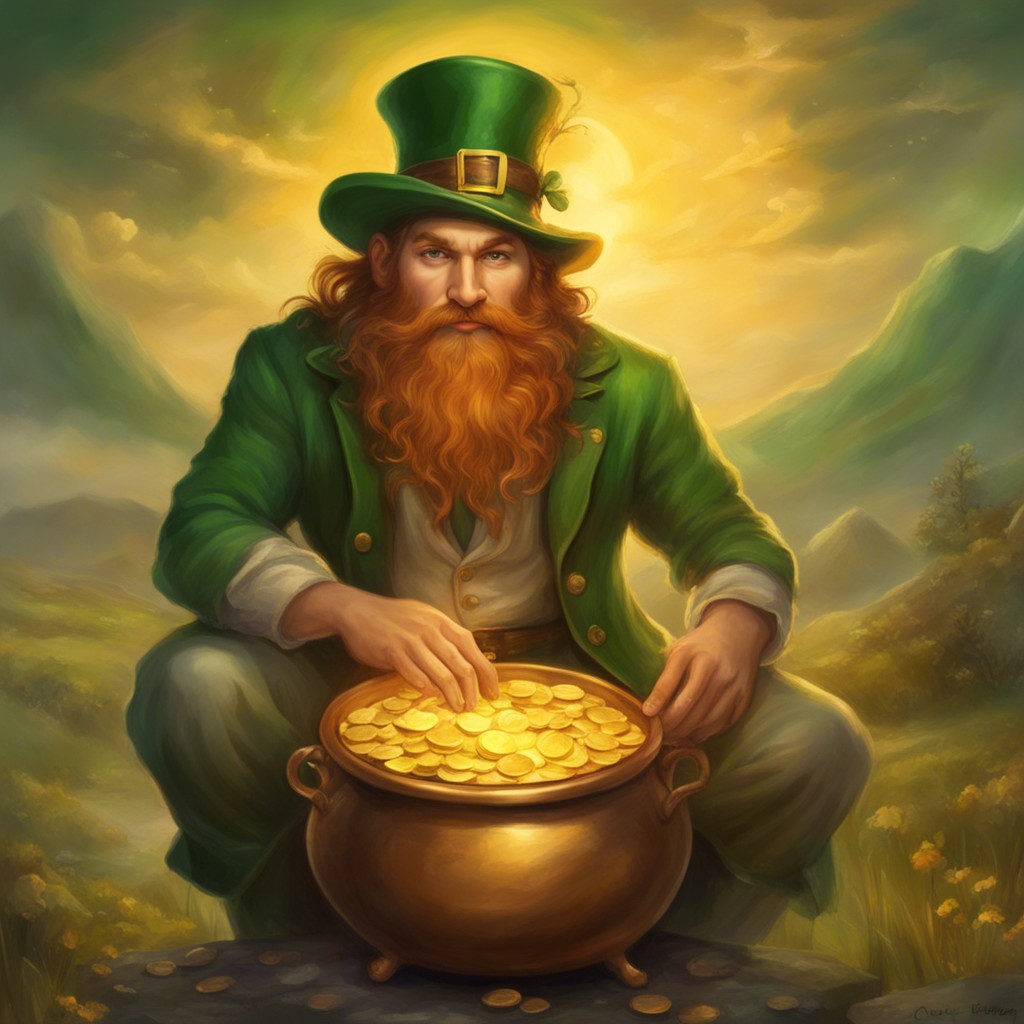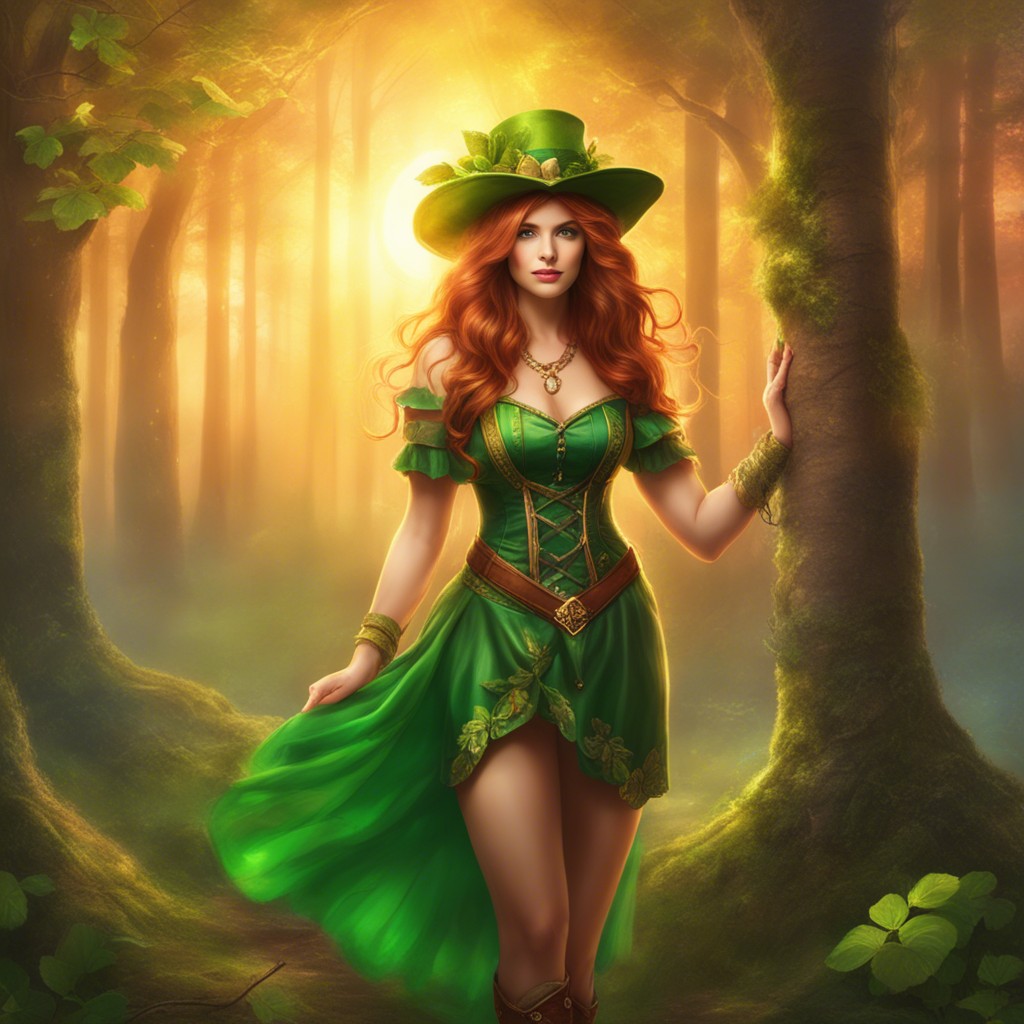Introduction
When one thinks of Ireland, various images spring to mind: sprawling green landscapes, historic castles, and, of course, the Leprechaun. This mythical creature has transcended Irish folklore to become an international symbol of luck and mischief. But how did the legend of the Leprechaun come to be, and what is its significance in both Irish folklore and fantasy fiction? In this comprehensive guide, we’ll delve into the origins, myths, and cultural relevance of Ireland’s most famous fey, the Leprechaun.

Etymology and Origins of the Leprechaun
The word ‘Leprechaun’ is believed to have been derived from the Old Irish term ‘luchorpán,’ which translates to ‘small body.’ It is also thought that the term could be a blend of ‘leith,’ meaning half, and ‘brogan,’ meaning a shoe, emphasizing the Leprechaun’s cobbler occupation.
The Leprechaun’s roots run deep in Irish folklore, often described as a type of fairy in diminutive form. They are known as solitudinous creatures who are skilled cobblers and hoard pots of gold. While they have a reputation for mischief, Leprechauns are generally not considered malevolent, but rather, tricksters with a cunning edge.
🍀 Click to Unveil the Last Leprechaun Toy Figurine You’ll Ever Need! LIMITED STOCK! 🍀
Physical Appearance of the Leprechaun
Leprechauns are typically male and stand about 2-3 feet tall. Clad in green attire with a bearded face, the Leprechaun’s appearance has become a staple of St. Patrick’s Day celebrations. However, it’s essential to note that the original Leprechauns in Irish folklore were not always decked out in green. They wore red jackets adorned with seven buttons, representing the various clans of the fairy folk. The modern-day image of the green-clad Leprechaun is more of a product of popular culture than authentic folklore.
The Pot of Gold and the Leprechaun
One of the most captivating aspects of Leprechaun mythology is the fabled pot of gold that they hide at the end of the rainbow. Folktales often speak of humans trying to outsmart Leprechauns to steal this treasure. However, the Leprechaun is a master of deception, often using his cunning to evade capture and safeguard his gold. The pot of gold serves as a metaphor for the unattainable—a vivid but elusive dream that many chase but few ever find.
The Leprechaun in Fantasy Fiction
Leprechauns have enjoyed a rich life beyond folklore, appearing in various fantasy works as either protagonists or side characters. They’re often portrayed as whimsical beings with arcane knowledge, serving as guides or helpers to the main characters. Their tricky nature is both an asset and a hindrance, adding a layer of complexity to their portrayal. Authors like Terry Pratchett in his “Discworld” series and Jim Butcher in the “Dresden Files” have featured Leprechauns, or similar fey creatures, displaying both their light-hearted and darker aspects.
The Role of the Leprechaun in Dungeons and Dragons
In Dungeons and Dragons, Leprechauns are part of the larger fey category, denizens of the Feywild—a parallel dimension filled with magic and wonder. They maintain their tricky nature, often setting challenges or riddles for adventurers. Their stats and abilities often center around illusions and enchantments, staying true to their folklore roots. Players seeking to interact with a Leprechaun in D&D should be prepared for tricks but also the potential for unexpected aid or wisdom.
Cultural Impact and Commercialization of the Leprechaun
The Leprechaun has been heavily commercialized, especially in the United States. It has become a staple for St. Patrick’s Day celebrations, cereal boxes, and even horror movies. This commercialization, however, has led to some disconnection from the creature’s authentic roots, transforming it into more of a caricature than a representation of Irish culture and Leprechaun folklore.
Discover the Secret Lore of the Emerald Isle NOW — Unlock Your Exclusive Leprechaun Figurine!”
The Leprechaun in Modern Media
In recent times, the Leprechaun has found its way into modern media, including movies and video games. In particular, films like “Leprechaun” have portrayed this fey creature as a malevolent being, a far cry from its original folklore image. In video games like “World of Warcraft,” Leprechaun-like creatures serve as treasure guardians or quest givers, further extending their reach into popular culture.

Conclusion: The Lasting Appeal of the Leprechaun
The Leprechaun serves as a fascinating study of how folklore can adapt and thrive in modern contexts. From its Irish origins to its place in fantasy fiction and Dungeons and Dragons, the Leprechaun is more than a mere mythical figure; it is a symbol that captivates imaginations worldwide. By understanding its roots and cultural implications, we gain insight into not just the folklore itself, but also the collective human psyche that such myths aim to explore.
So, the next time you think of a Leprechaun, remember that there’s more to this fey creature than a simple pot of gold at the end of a rainbow. It’s a rich tapestry of myth, culture, and imagination that continues to evolve, enchanting generations old and new.
With this comprehensive guide, you should now have an in-depth understanding of the Leprechaun, Ireland’s most famous fey creature. Whether you’re diving into folklore, fantasy fiction, or rolling a D20 in Dungeons and Dragons, the allure of the Leprechaun continues to captivate and intrigue. May your paths be ever lit by the shimmer of their pots of gold—but beware their tricky nature; it’s all part of the charm.